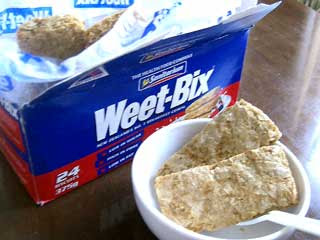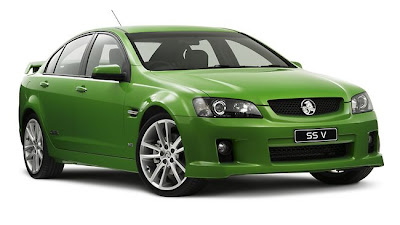Current US time and date: 4:17 am, Wednesday 5/22/13
How ya going, fifth grade? (That's Australian for "how are you?" "what's up?" "how are you doing?" etc...)
So, in hsie (history) the other day, the students began a unit on Australian culture and heritage. The first set of things they looked at were popular Aussie icons--things that are iconic to Australia. While I have picked up on some since being here, there were a ton that I had never heard of or known of, and I found them really interesting! I figured I would share them with you all as well. It's crazy how different cultures are, I love learning about the Australian culture/heritage, so this unit in hsie is going to be extremely exciting for me!
(Note: you may recognize -or recognise as they would spell it here- some of the things from previous blog posts as I have talked about some before. This is a itsy, bitsy, teensy, weensy, tiny list of iconic things in Australia; if I took the time to write down all that I could think of, or that an Aussie could tell me about, I'd be here for months!)
AUSSIE ICONS:
1. Vegemite: "A dark brown Australian food paste made from yeast extract. It is a spread for sandwiches, toast, crumpets and cracker biscuits as well as a filling for pastries." -http://en.wikipedia.org/wiki/Vegemite
Many students here enjoy it on toast, crackers, or cheese. Often times, students come to school with "vegemite sandwiches", which are simply vegemite spread on bread with a slice or two of cheese. I've also seen these being sold at sandwich shops in the shopping centers (malls)!
As you see, it's been bought by an American company--Kraft.
2. Akubra: "An Australian brand of bush hat, whose wide-brimmed styles are a distinctive part of Australian culture, especially in rural areas. The name is believed to be derived from an Aboriginal word for head covering." -http://en.wikipedia.org/wiki/Akubra
Only a few students recognized this, which told me that it's popularity must be dying with the younger generations. One student recognized it from the movie Crocodile Dundee.
3. Cork hat: "A type of headgear with cork strung from the brim, to ward off insects." -http://www.ehow.com/about_6529426_australian-cork-hat_.html
Most of my students knew what this was, I've never seen such a thing in my life! I think I need to invest in one, because some of the insects here really scare me.
4. Weet-bix: "A high-fibre breakfast biscuit manufactured in Australia by the Sanitarium Health Food Company, and in South Africa by Bokomo." -http://en.wikipedia.org/wiki/Weet-Bix
I hadn't heard of these before, but from what it sounds like, they're almost like jumbo sized Mini-Wheats! Some students say they eat 2 for breakfast, some prefer them with Nutella on them. One student explained to me that they also make bite-sized ones (I'm picturing a bowl of Mini-Wheats) that they eat in yogurt or with milk and fruit in a cereal bowl. Interestingly enough, Kellogg's had a play in the origin of these biscuits!
5. Tim Tam: "A brand of chocolate biscuit made by the Australian food company Arnott's. A Tim Tam is composed of two layers of chocolate malted biscuit, separated by a light chocolate cream filling, and coated in a thin layer of textured chocolate." -http://en.wikipedia.org/wiki/Tim_Tam
I am obsessed with these; they're addictive! I have not met a single Australian yet that is not in love with Tim Tams--in fact, I have friends that have visited Australia before and have begged me to bring boxes home for them! I most certainly am stocking up before I leave. Interestingly enough, the company that makes Tim Tams, Arnott's, is a sister company of the US-brand Pepperidge Farm--whom have bought out the Aussie company. That being said, Tim Tams are apparently available in the US but only in certain stores (Target being one of them), and only between October and March (though some Northern states have them year-round). They also are not called "Tim Tams" in America, but rather, "Arnott's Original". All I know is that I need to find them once I'm home.
Fun Fact: if you bite the corners off of the biscuits (cookies), they actually turn into straws which you can drink milk or hot chocolate through! Mmmm
*No, that's not me
6. Surfer lifesaver (lifeguard) cap: "Surf Lifesavers are men and women who volunteer their time to provide aquatic supervision all over Australia's coastal environment. Currently Surf Life Saving Queensland has more than 8000 active lifesavers who patrol the beach every weekend through affiliated community based volunteer clubs."
"The red and yellow cap is an internationally recognised safety symbol and is proudly worn by surf lifesavers so they are easily identified by the public, particularly when they are performing patrol duties in the water. The cap is also worn by lifesavers for their own safety so they can easily be identified by fellow lifesavers." -http://www.lifesaving.com.au/default.asp?contentID=737
7. Kangaroos! "The kangaroo is an unofficial symbol of Australia, and appears as an emblem on the Australian coat of arms, on some of its currency, and is used by some of Australia's well known organisations, including Qantas and the Royal Australian Air Force. The kangaroo is important to both Australian culture and the national image, and consequently there are numerous popular culture references." -http://en.wikipedia.org/wiki/Kangaroo
I learned something interesting about the kangaroo and Aussie relationship in class the other day: Australia is supposedly the only country that eats its 'national animal'--an animal that appears on the symbol for Australia (Coat of Arms of Australia) <--Our national animal equivalent would be like our bald eagle on the Great Seal of the United States of America. In fact, I experienced my first kangaroo burger just Sunday night (don't hate me, everybody!). Kangaroos are a lot like deer for us. They are abundant and hunted/eaten much like deer/deer meat. The kangaroo burger actually wasn't bad at all, and I'm a picky eater. Who would've thought!
The Coat of Arms of Australia symbol
My burger Sunday night (again, sorry to all you kanga lovers!)
8. Emu: "The largest bird native to Australia...There are three subspecies of emus in Australia. The emu is common over most of mainland Australia, although it avoids heavily populated areas, dense forest, and arid areas..." -http://en.wikipedia.org/wiki/Emu#cite_note-Davies2-8
Yes, the birds that I repeatedly talk about because they terrify me. Thankfully, they cannot fly, but they can out run anyone/anything! It is only right that I put this after the kangaroo for 4 reasons: 1. It is another national animal of Australia (their national bird) 2. It is on currency, stamps, and other cultural symbols 3. It is on the Coat of Arms 4. It is eaten by Aussies
I have yet to have this, and am not so sure I will try it while here. My host family wants to cook it for me, but I've heard it does not taste all that great. I think kangaroo is as adventurous as I'm getting on my food tasting!
Fun Fact: The emu and kangaroo appear on the Coat of Arms because they are two animals that cannot walk backwards. This is symbolic because Australians wish to always be moving forward!
9. Holden: "An Australian automaker that operates in Australasia (Australia, New Zealand, New Guinea), headquartered in Port Melbourne, Victoria (Victoria is a state in AU)." -http://en.wikipedia.org/wiki/Holden
I've never heard of these cars until I came here and started seeing commercials for them. I have also seen a few on the road. Like the Tim Tams, Weet-Bix, and Vegemite, there is yet another tie to America with this company--it is a subsidiary (sister company) of the US-based company GM. From what I gathered in class, it seems this car brand is dying out due to popularity and prices of other car brands from Japan, China, etc... This poses as a problem for Australia because, if the company closes, it means there will be less jobs for Australians (much like the issue going on with American car companies and workers in America!).
10. Meat pies: "A hand-sized meat pie containing largely diced or minced meat and gravy, sometimes with onion, mushrooms, or cheese and often consumed as a takeaway (Australian for take-out) food snack." -http://en.wikipedia.org/wiki/Meat_pie_(Australia_and_New_Zealand)
I came in contact with these the first day I arrived. The first one I had was a tiny, hand-sized one, but the other night we actually had a bigger, pie-sized one for tea (dinner)! They are very good and remind me kind of like a chicken-pot pie. Australians traditionally put tomato sauce on top of them, but I ate mine plain. A way you may hear many Aussies order their meat pies at--well, basically any place that sells food, is by asking for a "meat pie and dead horse". When said fast enough, and with the Australian tongue, it sounds like meat pie and "tomato sauce". Funny, right?
11. Lamington: "A dessert of Australian origin. It consists of squares of sponge cake coated first in a layer of traditionally chocolate icing, then in desiccated coconut. Lamingtons are sometimes served as two halves with a layer of cream or strawberryjam between, and are commonly found in South African and Australasian outlets such as cafes, lunch bars, bakeries, home industries and supermarkets." -http://en.wikipedia.org/wiki/Lamington
This is one famous Aussie dessert that I had yet to have, and when my students and teacher learned this the other day, they just about had a heart attack. I was repeatedly told how delicious it is, and it was decided that I needed to try it ASAP. Today, a teacher brought it in for the class and me! I must say, it was just as good as everyone made it out to be. The one we had, had a slim layer of cream in the middle, but you can also make it/buy it without cream.
^Here's a picture of the lamington from today!^
12. Pavlova: "A meringue-based dessert named after the Russian ballet dancer Anna Pavlova. It is a meringue dessert with a crisp crust and soft, light inside...The dessert is believed to have been created in honour of the dancer either during or after one of her tours to Australia and New Zealand in the 1920s." -http://en.wikipedia.org/wiki/Pavlova_(food)
Another popular Australian dessert. I had a few bites of this for the first time at a staff meeting at school. It was very, very delicious. So light and fluffy like the meringue on top of a lemon meringue pie--topped with sweet fruits! I would love to attempt to make this once I'm home. I've been told by the family that my host mom can make a pretty mean pavlova, so she's going to teach me how!
Well, guys, I'm going to stop myself there because that is quite a lot of Aussie icons to take in at one time! I told you this would take a while! Hopefully in a few days I'll be able to do a second part to this with the few that I have left on my list from hsie class. As well, I'm due for another post on language because, since my last one, I've heard quite a few new terms and slang words that I think everyone would find interesting! I can't decide which I find more exciting, the language or the culture/heritage icons.
I hope you all are still awake after that little history lesson of a blog post. As well, I hope you found it as riveting as I did! On a side note, your pen pals have started replying to your letters--if I have yet to get one from you, please copy and paste it into an email soon for me. Ta! (That's Australian for "thanks" or "thank you")
Have a good Wednesday, everyone--you're halfway to the weekend! Me, on the other hand, I'm more than half :) Thanks, time difference!
Hooroo! (Australian for "good-bye")
-Miss Probasco















.JPG)


No comments:
Post a Comment